There are so many connections with the Ancient Jewish people and the Tribe of Judah here in the United States of America. Long before the Tribe of Judah, we also know the word Hebrew comes from the name in Genesis of Eber. Abraham and Moses were from Eber. We also know Christ was a Judean of the House of David. There are roots all over the United States about Hebrews and Judah. Many connect the Hebrews in the USA from 1500 BC to 400 AD and many say the Native Americans speak of an earlier time where white people were a great culture before them.
The Hebrew come through Eber to Abraham to Israel to his 12 sons including Judah, through Moses through David to Christ who was from Judea.
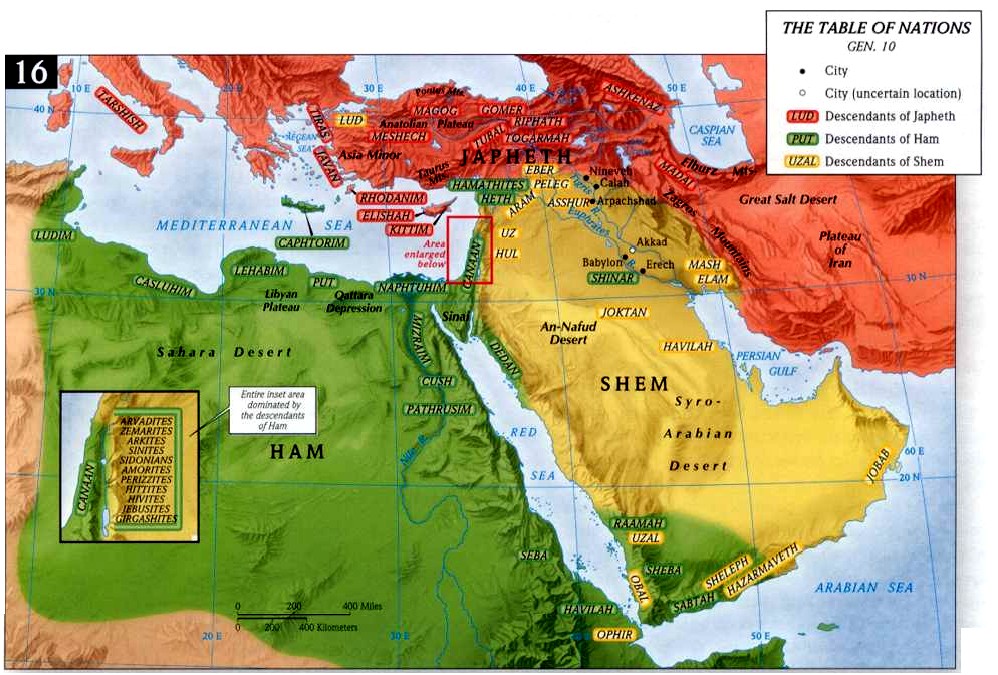
We will discuss the separation of Judah and Benjamin at about 586 BC from the other 10 tribes of Israel at another time.
Read about some of these historians and their findings about the connection between Hebrews and Native Americans.
 James Adair
James Adair
Ethan Smith
David Cusick
Arthur Parker
William A. Ritchie
Elias Boudinot

We have another link in the chain, proving the Hebrew were here many years before the white man came to this continent, and that the present North American Indians are their descendants.” Ten Tribes of Israel or the True History of the North American Indians showing that they are descendants of the Ten Tribes of Israel. By Timothy R. Jenkins, Springfield, Ohio 1883 SourceWhere are the Hebrew Children of Israel
“If My people who are called by My name will humble themselves, and pray and seek My face, and turn from their wicked ways, then I will hear from heaven, and will forgive their sin and heal their land.” – (II CHRONICLES 7:14)
|
We of United Hebrew Congregations believe that in order to understand who the Ancient of Days is and to understand His Plan for man we must understand who Israel is and where they are located in the earth today. We also believe that all the world needs to Quest for the knowledge of who He is. Why is it important to understand where the Hebrew Children of Israel are located? It is important because the prophecies of the Hebrew Scriptures (OT) are written primarily to or about these people. So what difference does that make? Simply that when the Calamities at the End of the Age (Tribulation or the Time of Jacob’s Trouble) begin to fall upon these people they need to know who they are, where they are mentioned in Scriptures, and why this is happening to them. The Hebrews consisted of twelve tribal nations that were taken into captivity by their enemies and ten of the tribes have not yet returned. To initiate the Quest for the Ancient of Days and the Lost Ten Tribes we will take the approach of tracing a single tribe in their many journeys over time. The tribe of Dan was prophesied to leave way marks along their trail and this is our attempt to follow that trail. We hope you enjoy the journey. |
“Could there be the possibility that some of the “red” Indians of North America were Esau and the “white” Indians of Jacob? Some (myself included) have believed for years that ETERNAL gave America to Israel, the son of Isaac, for an inheritance. It is part of our “promised land.” Wasn’t Esau his son too? Perhaps some of the red Indians have a rightful claim to North America too. (Digression ended)” Walter
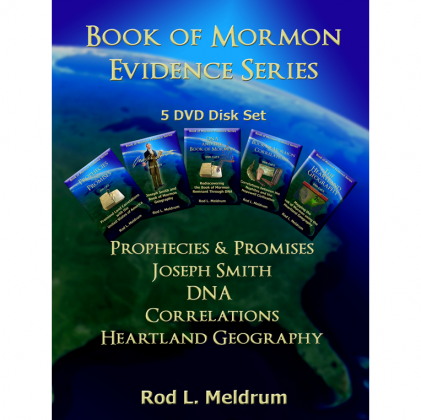 Book of Mormon Evidence 5 DVD Series
Book of Mormon Evidence 5 DVD Series
by Rod Meldrum (DVD)
DNA-IN NORTH AMERICA
HEARTLAND
+3 ADDITIONAL DVD’s
Purchase Volume One with 5 DVD’s Here:
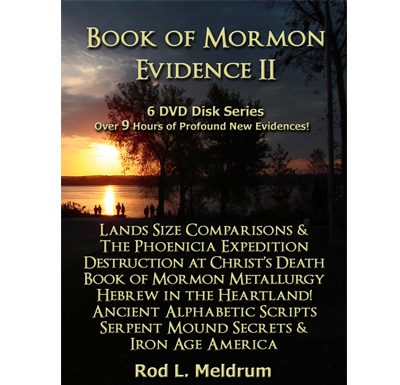 Book of Mormon Evidence Vol. II – 6 DVD Set by Rod Meldrum (DVD) Just $3.30 for each DVD– $19.95 Total
Book of Mormon Evidence Vol. II – 6 DVD Set by Rod Meldrum (DVD) Just $3.30 for each DVD– $19.95 Total Was $30.00
Hebrew in the Heartland
The Phoenician Expedition
+ Four other complete DVD’s
Purchase Volume Two 6 DVD’s Here
Dan in America – Part 2 Chapter 1
By Walter Baucum
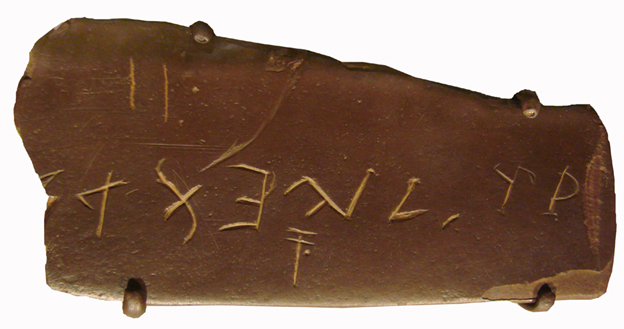
“Send these the homeless, tempest-tossed to me, I lift my lamp beside the golden door.” When Emma Lazarus penned these famous lines in 1903, she might have been reflecting an ongoing situation through much of recorded history. This is that America, for well over 2,000 years, has served as a place of refuge for Old World peoples driven from their homes by conquest or persecution. 1 Evidence abounds that many of these visitors to America were Israelites, Dan being just one tribe among them. A clay tablet found in a rock crevice near Big Bend, Texas, tells of Zoroastrians (followers of Mithraic sun worship) who came once to America, probably from Iberia. Dr. Henriette Mertz, Professors Cyrus Gordon and Cyclone Covey, and Dr. Robert Stieglitz discovered an immigration to Tennessee and Kentucky of homeless Jews after the many pogroms of Antiochus in Syria and Nero and Hadrian in Rome. Some were here already when, in 69, during the First Revolt of Jerusalem against the Romans, others came over. Flavius Josephus, who himself took part in this revolt, mentions that through the year 69 a great comet hung like a flaming sword over Jerusalem. Some Zealots took it to be the sign of the coming of the promised Messiah and rebelled. Today we know that it was Halley’s Comet, making one of its many returns. A stone excavated from a burial mound at Bat Creek in Tennessee tells us that Jews in Tennessee recognized the sign and inscribed the stone “The Comet for the Jews.” DAN IN AMERICA
The Bat Creek Stone’s inscription was translated into English by several Hebrew language scholars. What was the translation? ”For the Judeans,” or “For Judea,” a clear reference to ancient Israel. Blog and source here:
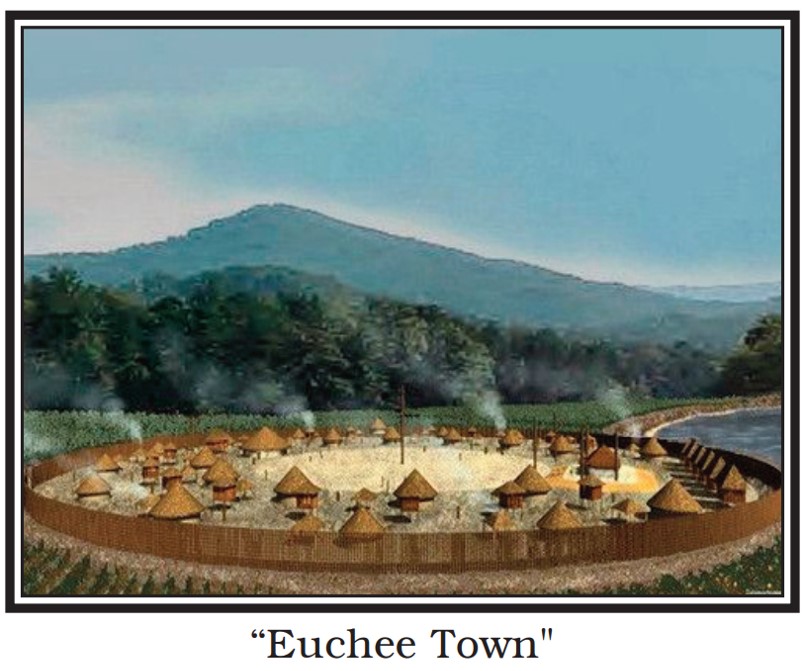
DAN IN AMERICA continues, “This strongly suggests that Tennessee and Kentucky became havens of refuge for these persecuted Hebrews. A later influx of Jews came to the same place after the next, and last, revolt against Rome over a hundred years later. Hebrew shekels dating from the Second Revolt in 132 occur in many parts of Kentucky and a nearby district of Arkansas. Dr. Joseph Mahan is presently researching these matters in the language and traditions of the southeastern tribes. He also is investigating Hebrew religious ceremonies found among the Yuchi Indians there.

At Los Lunas, near Albuquerque, is a version of the Ten Commandments engraved on rock and another similar inscription has been found on a stone tablet found in a burial mound at Newark, Ohio. These are ancient inscriptions using a north Canaanite script and old Hebrew language. 3
These petroglyphs date to 800-900 B.C.E. and are in the Old Hebrew language and using a Phoenician alphabet. 4
Note the date. This was in the times of King Solomon and the Phoenician King Hiram. The authors believe this region in New Mexico to have been the destination of the “Ships of Tarshish” in 1 Kings 10:22. The Old Hebrew language was not used by the Jews after the Babylonian exile. Aramaic replaced it. The old script was replaced in the last century B.C.E. by the quadratic script, which is still in use today. Rabbis, though, still understand the Old Hebrew, in which the first five books of Moses are written.
The Phoenician language and script had spread through the Mediterranean area by the turn of the first millennium B.C.E., was the basis of the Hebrew, Greek, and other alphabets, had been supplanted in the old Phoenician territory around Tyre and Sidon by the time of Alexander, but had remained dominant in Carthage (called Punic language) until the city’s destruction by Rome in 146 B.C.E. In other North African and American colonies of the Phoenician-Danites, the language remained in use until the 4th century C.E. Then it, along with Cuneiform writings and Egyptian hieroglyphs, vanished into oblivion. About 200 years ago the Phoenician script was deciphered.
The above authors wondered if the inscriptions were made by Jews (Israelites–probably Dan), who, together with Phoenicians, made long voyages for King Solomon. After an absence of three years, they delivered 420 talents of gold (1 Kings 9:28 and 10:22). The 420 talents would be about 11,000 kg. today with a value of about 100 million dollars. Nowhere in the Bible is there a clue to where “Ophir” is. The Phoenicians, we have learned, kept their trade routes a strict secret. 5
The authors decided to investigate further, specifically to check out the assertions by skeptics that they were a Mormon fake. At the Mormon Pioneer Museum in Salt Lake City, they found no evidence of Mormons having been in the Los Lunas area, except for one instance. The “Mormon Battalion,” which was part of the U.S. Army during the Mexican War, marched from Santa Fe down the Rio Grande Valley. They read diaries of the soldiers, reading that the officers commanding the battalion maintained strict discipline, allowing none of their soldiers to leave the column. Also, a Professor Charles S. Peterson, Mormon history specialist, told them that in the 19th century, no Mormon would have been able to write such an inscription. Joseph Smith had studied Hebrew, but had been murdered before the Mormons’ trek to the West.
Another possibility might have been when the Romans destroyed Carthage. Punic sailors and other Israelites living there might have fled across the ocean to avoid the burning of their ships, which has been reported by Livius in his History of the Punic Wars. 6
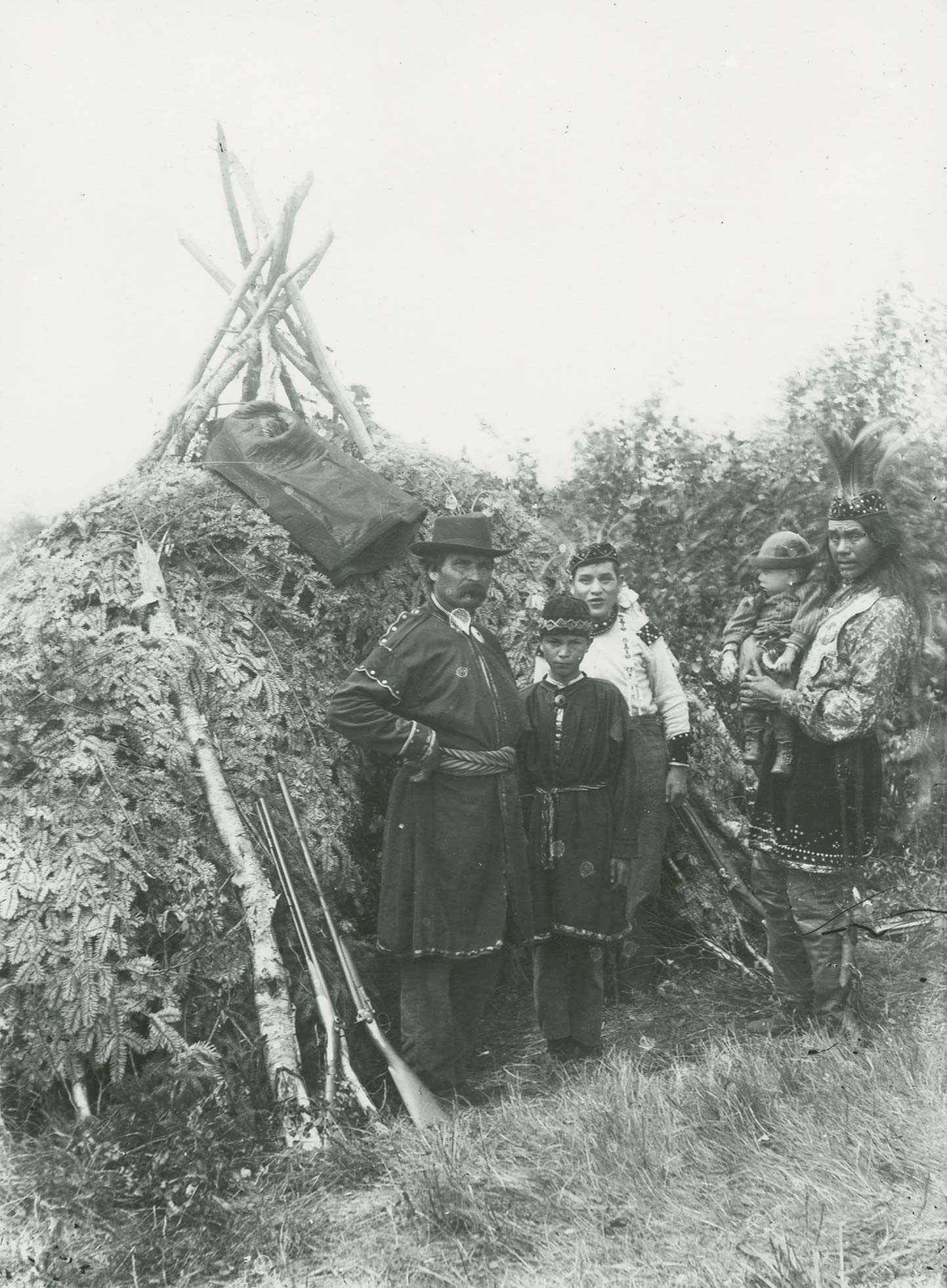
In 1558, a French churchman, the Abbe Amiot, became the literary sensation of Europe, having just discovered ancient Greek manuscripts by a historian named Plutarch in monastery libraries in Italy. In one segment of Plutarch, he discusses an ancient Carthaginian manuscript he says he found in the ruins of that city, one dealing with voyages across the Atlantic. The islands he mentioned perfectly fit the Orkneys, Shetlands, Faeroes, and Iceland (Ogygia). Then, he says, if you sail along this coast in a southward direction, you will pass a frozen sea and come to a land where Greeks have settled and intermarried with the native barbarians. 7 In analyses of Norse sailing routes, George Lechler pointed out that the southern part of Davis Strait, between Labrador and Greenland, becomes an impassable mass of floating ice during the summer season, when northern navigations could be performed. The land where the Greeks had settled and intermarried with the native barbarians, Nova Scotia and New England, lies in the position Plutarch gave, for he said they lay in the same latitudes as the Caspian Sea.
I won’t go into the prevalence of Greek roots of the Micmac language, but will remind the reader that many of the Greeks were Danite Israelites. Briefly, though, Barry Fell says the Greek of Micmac is more appropriately called Ptolemaic Greek, and it came to Nova Scotia and Maine from North Africa, where many Greek-speaking communities existed in Classical times.
In “Barry Fell and His Accomplishments,” we find that the ancient San Telmo Stone of Portugal, believed to have the oldest form of Basque writing on it, was unreadable until Fell deciphered it, using the Cree Indian alphabet of North America. 8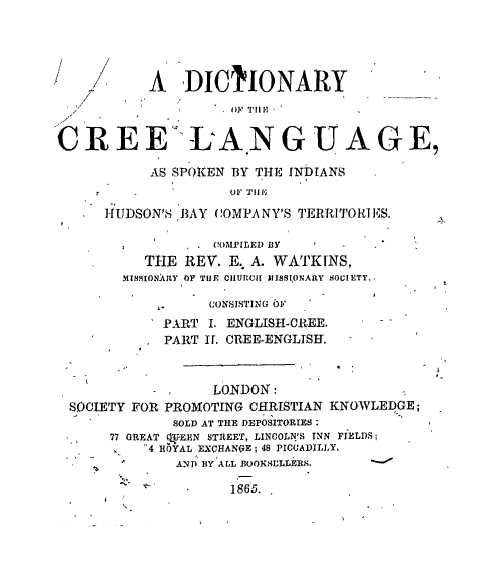
Plutarch records that the northern outward route followed by Carthaginian ships to America went by way of Iceland (Ogygia?), and the return route followed the anti-trade winds around latitude 40 degrees N. back to Spain and Carthage. Likely, many ships followed the outward route used later by Columbus, in tropical latitudes, thereby gaining the benefit of the westward-blowing trade winds. Diodorus of Sicily implies that this route was followed when he speaks of an island resembling Cuba that the Carthaginians discovered.
Barry Fell and others have found multiple evidence of Phoenicians in America. He and his colleagues visited the ancient sites of Carthaginian settlements in North Africa and Spain and the ruined cities of peoples who were allies of them, or whose mariners sailed on Carthaginian ships. They visited archaeologists and historians who work on Old World sites and discussed their American finds with them. Many of these came over to America to study the finds for themselves and to lend their skills.
Carthaginian coins have been found in the Azores and all over America. All have one characteristic in common. All belong to the earliest issues of Carthage, those of the fourth and early third centuries B.C.E. All are the work of highly skilled Greek artists.
According to legend, a horse’s head in the ground was the Oracle’s prediction of how the founders of Carthage would recognize the site destined for the city. It was used, with a palm tree, as the coat of arms of Carthage. Carved horse heads have been found in North Africa and America. A white limestone horse’s head was discovered in North Salem, New York, near stone chambers, both being quite ancient.
Symbols of the goddess Tanith (spouse of Baal) and related signs have been found on Carthaginian tombstones in North Africa and in Colorado, almost identical and being another symbol of Carthage.
We have shown earlier how the Tribe of Esau became the Phoenicians and how Dan was intermingled with them; how their most famous ancient cities were Sidon and Tyre; how around 800 B.C.E. they established strong trading posts on the North African coast, west of Egypt and as far afield as Morocco and southern Spain; how one of their posts grew into the powerful Kharkhedona (called by the Greeks and Romans “Carthage”) located in a bay at the northern tip of Tunisia; how they traded in purple dye and cloth and were called “Phoinikoi,” (The Purple People) by the Greeks (and from which word we get our name, Phoenician) and Punici by the Romans, which means the same. We usually restrict the use of the word “Punic” to serve as a synonym for Carthaginian and speak of them as using the “Punic” language. 9 They were famed mariners and established a complete monopoly on the tin trade, getting it from England and areas near the British Isles. They jealously protected their monopoly on it by blockading the Straits of Gibraltar so that no foreign vessel could leave or enter the Atlantic without their knowledge and permission.
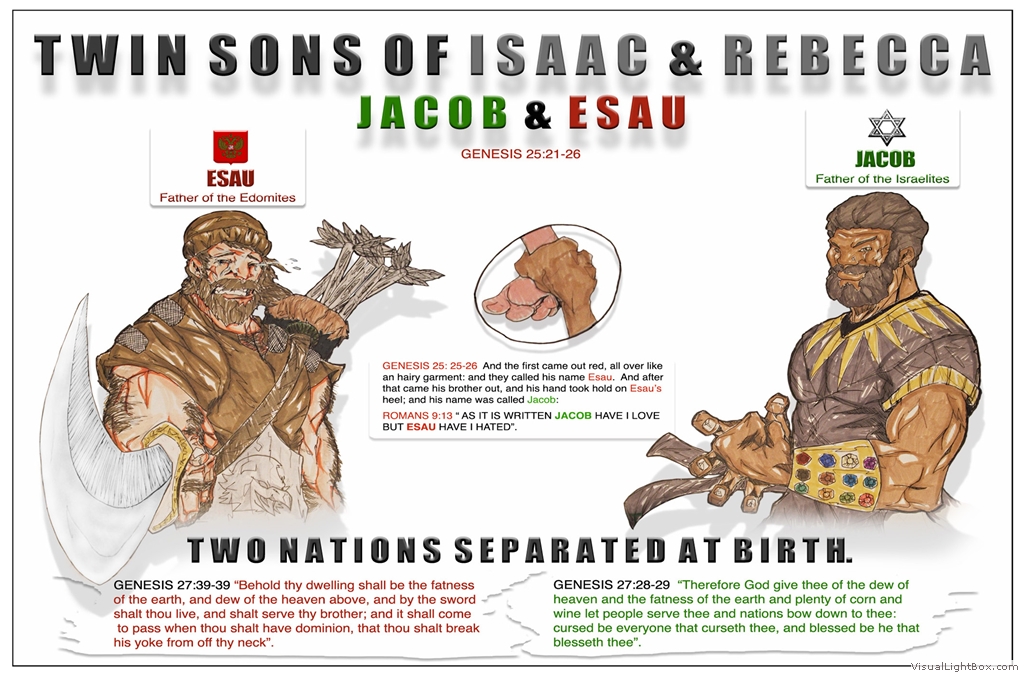 Tin, remember, is used with copper to make bronze, which was in high demand by most of the Mediterranean world of that day. Tin was mined and smelted continuously in Cornwall from Bronze Age times onward, right through the Roman occupation and on through the Dark Ages and medieval times until the modern era. Because of the mixture of Danites with Phoenicians, wherever Phoenicians went, Dan went also.
Tin, remember, is used with copper to make bronze, which was in high demand by most of the Mediterranean world of that day. Tin was mined and smelted continuously in Cornwall from Bronze Age times onward, right through the Roman occupation and on through the Dark Ages and medieval times until the modern era. Because of the mixture of Danites with Phoenicians, wherever Phoenicians went, Dan went also.
Besides searching for tin and copper, other Old World peoples came for different reasons. Religious motives caused Egyptian equipped expeditions to be sent far and wide. Pharaoh Ramesses III, in his quest for immortality, sent out ships to find the celestial paradise, the Mountain of Manu, which supposedly lay in the far West. There is evidence to show that the ships reached Mexico during the 12th century B.C.E. and established the Olmec civilization, which in turn became the mother civilization of other American civilizations that followed.
Thor Heyerdahl, in the now-famous Ra-Expeditions, reported that the Palenque Pyramid in Mexico and the Egyptian pyramids are extraordinarily alike. In addition, he says, there was a priest king laid out in the coffin. “Its lid, and the walls of the tomb, were decorated with reliefs of human figures, some wearing false beards as a badge of rank, a custom duplicating an ancient Egyptian habit. Inside and outside, the sun king of Palenque had followed the ancient Egyptian formula for pyramid burial.” 10

Concerning the density of foreign traffic along the navigable coastal and riverine waterways of North America, a map shows that the main arteries into the interior were the St. Lawrence downward and into the Great Lakes, the Mississippi River upward and eastward and westward, and the Snake-Columbia outward. Petroglyphs depicting ancient coins extend the range to the ancient equivalent of the Oregon Trail, extending across the prairies to Moneta in Wyoming (center of the fur-trading center in ancient America during Roman times, believed by Fell and others). Moneta lies near the North Pass in the Great Divide, making it as convenient in those days as the nineteenth-century Wyoming markets were for trappers and buyers of the Astor Fur Trading Company. This route also gave access to Nevada and Californian silver and, in the north, the Michigan copper mines linked both the upper Mississippi traders and the ships on the Great Lakes.Fell opines that many furs were taken across to the Snake River near Rexburg, Idaho, then on downriver to the Columbia and to its mouth in the Pacific. There, Arab traders in their ocean-going dhows picked them up and sold them to Asian and European markets, especially to the Romans. Tons of evidence seems to support this theory, but time and space will not permit it here. The fact is that over 22,000 deep-earth copper mines, found in Michigan alone, also tend to support Fell’s and others’ theories that the Phoenicians exploited America for centuries during its monopoly on the tin and copper trade. Amerindians did not dig deep mines to gather copper. 11
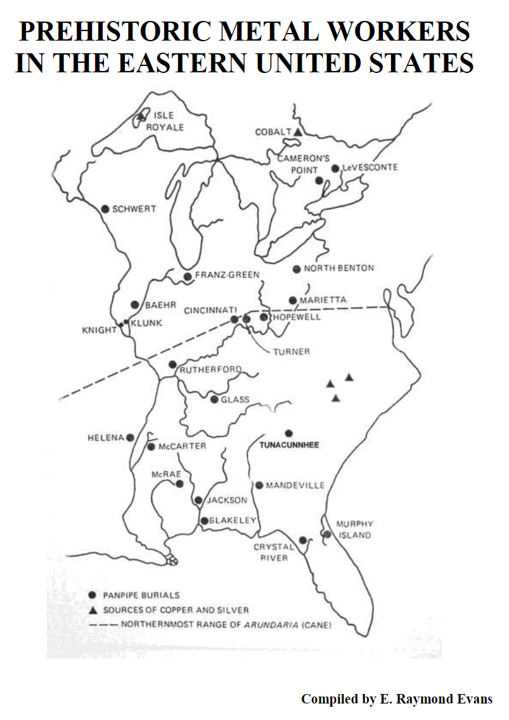 Everywhere they went along these river arteries, they left messages in the rocks for others coming after them. Having personally visited Wees Bar on a main trade artery, the Snake River, 25 miles below Boise, I have observed the highest concentration of petroglyphs in the state of Idaho. On one rock alone are engraved three different ancient languages: Arabic, Viking (runic), and Egyptian.
Everywhere they went along these river arteries, they left messages in the rocks for others coming after them. Having personally visited Wees Bar on a main trade artery, the Snake River, 25 miles below Boise, I have observed the highest concentration of petroglyphs in the state of Idaho. On one rock alone are engraved three different ancient languages: Arabic, Viking (runic), and Egyptian.
These written messages, with their proven alphabets, are called Great Basin Curvilinear by the ostrich archaeologists, many still believing them to be graffiti markings on rocks put there by bored Indians. Eventually, though, the inter-oceanic trade ceased.
“The conquest of Egypt by Darius I in 525 B.C.E. and the successive rise of the Greek and Roman empires effectively closed the eastern Mediterranean to Carthaginian shipping. Carthage retaliated by closing the Straits of Gibraltar to all European mariners. Under the guise of supposed Spanish and North African trade, Carthaginian merchants exploited the North Atlantic resources, bringing to Cadiz the copper of the Celtiberian settlements of North America, and the tin of Cornwall, to provide the raw materials of a bronze industry, whose products were re-exported to Britain, Gaul, North America, and West Africa. The Celts of New England obtained a share of the American imports by supplying furs and hides, both of which the Carthaginians re-exported to the eastern Mediterranean as supposed products of Gaul, the furs even reaching India. By the time the Romans conquered Spain and Carthage, they had adequate alternate sources of these materials, and they took no interest in overseas shipping, having no merchant navy. The North American trade dwindled, the last phases presumably being operated by the maritime Celts of Brittany until their conquest by Caesar in 55 B.C.E. For 400 years after the Battle of Actium in 31 B.C.E., the Romans had no navy, since they had no rivals, and the memory of America apparently was lost. By C.E. 200, geographers believed that a voyage westward from Spain would lead to India and China, and this was the inheritance of Columbus.” 12
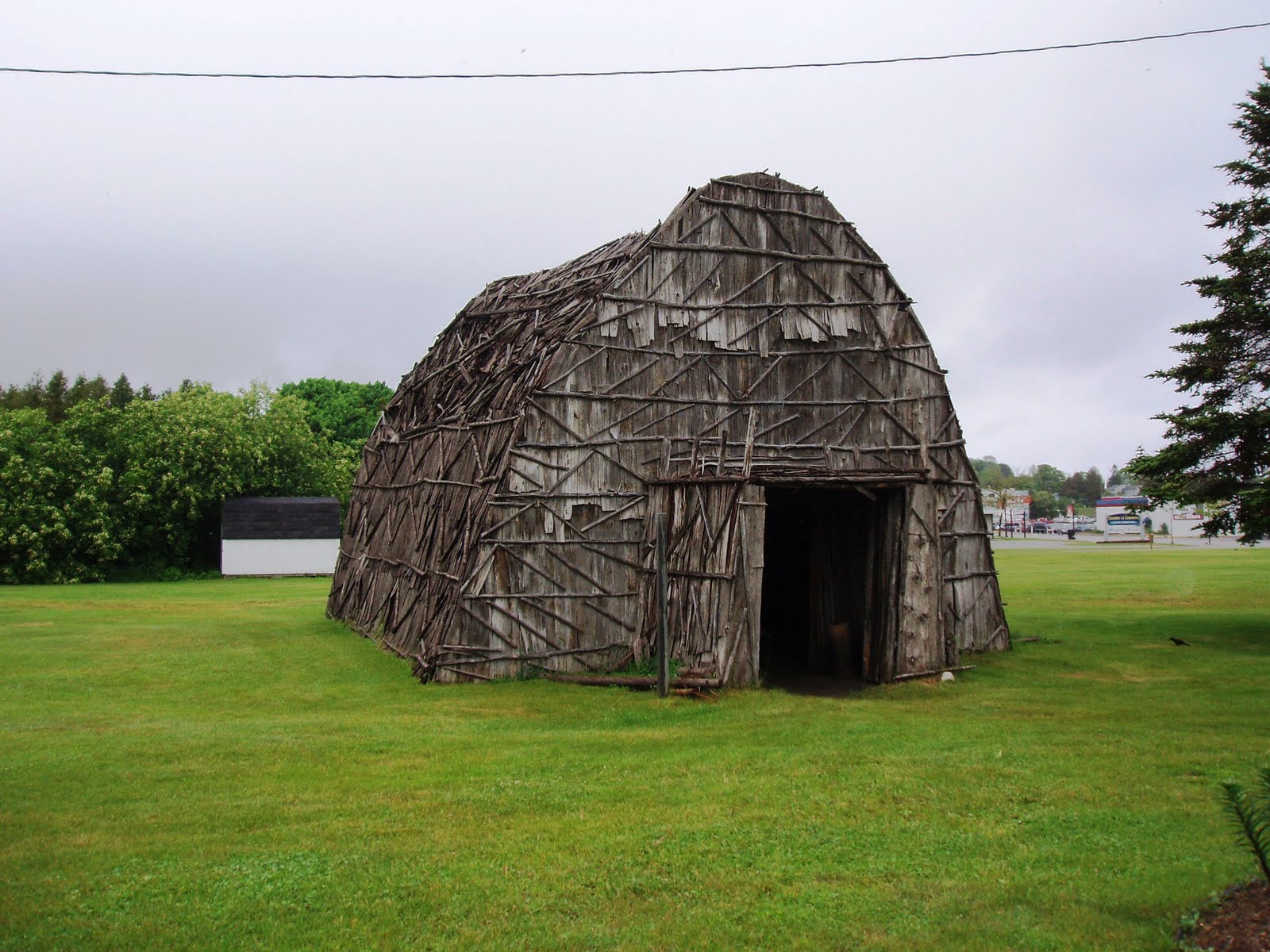
There are definite indications of North African influences on the Algonkin “Indians” of North America. Fell notes that the Kyrie eleison (Lord have mercy) on a Kikapoo prayer stick preserved in the Smithsonian Institution appears three times written in Carthaginian (Semitic) letters and language. The omission of “Christ have mercy” suggested to Fell that this might be a pre-Christian formulation.
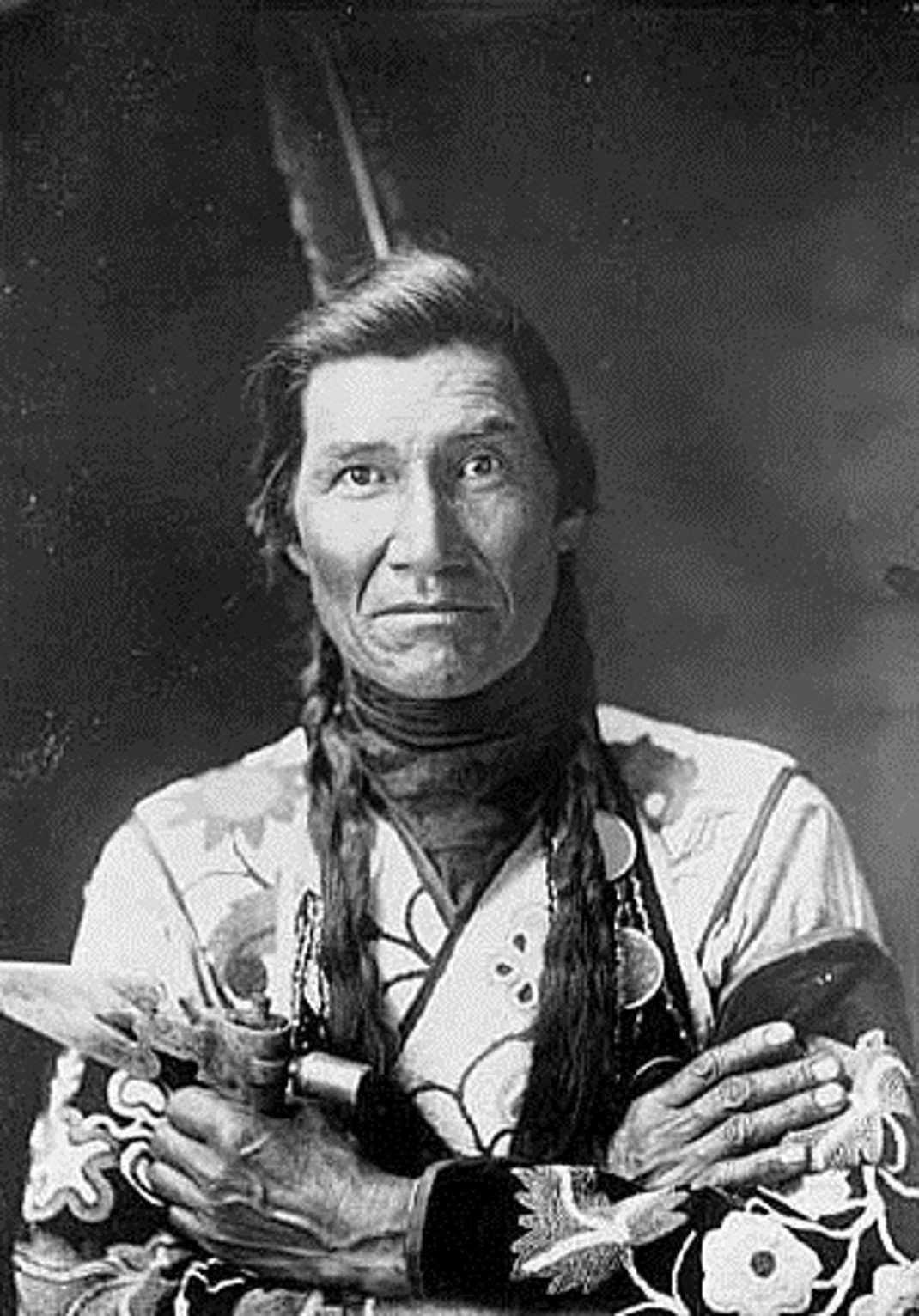 George Carter discusses cowry shells from the Mediterranean among the Objibwa. “What is indicated is some important contact with the Mediterranean, and more specifically with North Africa…. “…Jackson reporting that the same shell is used in the same way in West African society. “…when it is found that Cyprea moneta was found in an Adena mound.“ 13
George Carter discusses cowry shells from the Mediterranean among the Objibwa. “What is indicated is some important contact with the Mediterranean, and more specifically with North Africa…. “…Jackson reporting that the same shell is used in the same way in West African society. “…when it is found that Cyprea moneta was found in an Adena mound.“ 13
The Adena were builders of great mounds that were earlier and different from the so-called temple mounds of the Southeastern United States. Alphabetic inscriptions, i.e., the Grave Creek Mound inscription of probable Libyan (Northwest African) origin, as well as other traits, suggest Old World connections for this Adena culture.
Linguists had classified the speech of the Atakapa, Tunica, and Chitimacha tribes of Southern Louisiana, Southern and Delta Mississippi, and Southeast Texas as unique, having no known relationship with any known language. Fell researched this thoroughly. “But my examination of the vocabulary, particularly that of the Atakapa, since it is better known than the other two, disclosed an all embracing affinity with the known languages of ancient Egypt and the peoples of the adjacent sections of the Nile Valley.”
Continuing, Fell says that whenever an Egyptian expedition to foreign lands was imminent, the Pharoah would initiate a massive slave raid on the black tribes of the Upper Nile to provide laborers and mariners. The speech of these tribes would indicate just such a scenario if Egypt had established a trading outpost in the Lower Mississippi in ancient times, and if the members had either been abandoned or had of their own volition remained behind. He believes such a small colony could have survived only by merging with local Indians to produce a mestizo population, speaking a tongue derived from the several different contributory dialects.
Their vocabulary is seen to span elements of virtually every aspect of life in a society such as an Egyptian-led trading community in the New World 2,000 years ago. The language includes elements of Memphitic (lower Nile), Thebaic, Nubian (Blue Nile), Nuer (White Nile), and Luganda and Nandi (area around Lake Victoria). 14
The Danite/Phoenician Transoceanic Trade
In a chapter entitled, “America and the Punic Wars,” Barry Fell makes a good case of America’s involvement in the three Punic wars Phoenicia fought with Rome. The dates of the Carthaginian coinage being found all over America match the sudden influx of gold in Carthage. While the initial issues of this coinage was silver, the nature of the coinage underwent a sudden and dramatic change around 300 B.C.E., when very large quantities of gold coins began to be minted. It actually was mostly gold, mixed with small amounts of silver, and which coins were called “electrum” by the ancients. Phoenician-made (or they had them made–many being traced to the workshops of Cyprus as the most-likely origins of many of these) art objects were undoubtedly held in high esteem by Amerindians, for many have been found in North and Central America. Fell further suggests that these art artifacts were offered for barter at landing points in Panama or the Caribbean coast of Colombia or Venezuela and were traded for gold. Gold was not highly regarded over here, save as a metal easy to work into complicated jewelry or cast or hammered into figurines. Nevertheless, the dates of Carthaginian contact with North America, yielded by the coinage now being recovered so massively, match the sudden influx of gold in Carthage. 15
So Fell proposes that an American source for the Carthaginian gold coinage should seriously be considered, and that the gold was bartered for the bronze art manufactures of the Cypriot Phoenicians. He further proposes the source of the pine lumber which built the great fleets of Carthage, and whose supply suddenly dried up at the end of the First Punic War in 241 B.C.E. Along with the bronze art replica-gold trade going on, the Phoenician ships also picked up shipments of large pine logs from the Algonquian tribes (Editor’s Note: These are the North American Tribes near the Great Lakes that show DNA from West Eurasia. See article here), of Northeastern North America, to whom they traded adequate stocks of iron cutting-tools, axes, and other desirable items. This included occasional bronze art replicas, since so many have been found in New York and other places, low-value Carthaginian coins of attractive appearance, glass beads, and so on. Such trade, profitable alike to the Amerindian and the Carthaginian, would result in a steady input of gold and lumber on the home markets in Carthage, would yield the timbers needed to build ships, and would provide them with straight masts and oars, plus the gold ingots required to produce the coinage that financed the military and naval operations of the Sicilian War and later the First Punic War.
Barry Fell goes much deeper into this than I will, including an excellent argument for their ships picking up gold in Central and northern South America, then swinging up to Maine and other northeast states in North America to pick up pine timbers for ballast as these ships carried both across the Atlantic. Archaeologists are quick to point out that all the coinage and bronze artifacts and pottery, etc. are forgeries. But archaeologists continue their tendency to call anything they do not understand a “forgery.”
Editors’ note: (See my blog here about why many Mesoamericanists call every Hebrew item found in North America a forgery
Dan in America CoMany of them still call the Ogam, runic, Tifinag, and other writings on stones in America marks made by the plowshares of early Pilgrims or etchings made by tree roots growing down into the ground. 16 (Bold is mine throughout)
Not only were Plutarch’s writings confirmed by the American examples of Carthaginian coinage and trade goods, but in his continuing investigation, Mr. Fell became further convinced that Plutarch was speaking the truth when he said that Greeks had settled among the barbarian peoples of the Western Epeiros (the continent that rims the Western Ocean, as Plutarch [AD 46–after AD 119 was a Greek Middle Platonist philosopher, historian, biographer], called it–we call it America). He says these Greeks had intermarried with these barbarians, had adopted their language, and had blended their own Greek language with it. The Greek settlements were about a bay in the same latitudes as the Caspian Sea, indicating New England, New Brunswick, and Nova Scotia. 17
“Plutarch was writing at the beginning of the second century C.E. At that time, the world had long been known to be a globe (My note: this later was forgotten during the “Dark Ages,” when knowledge, education, and books were forbidden the common people in Europe and many began believing the world was flat), and lines of latitude and longitude had been invented back in the third century C.E. by the North African mathematician-geographer-astronomer Eratosthenes. Because of the depth of ignorance into which Europe fell in the Dark Ages, at times we are apt to forget how advanced were the ideas of the ancients, and how much they knew about the earth and about astronomy and navigation.” 18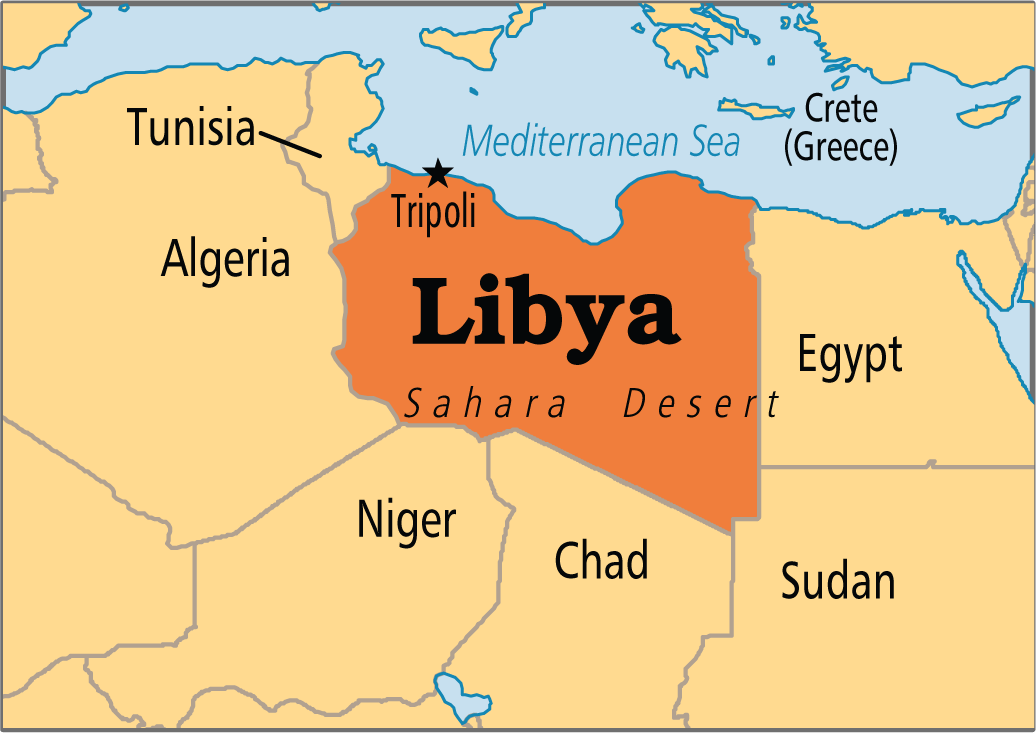 Now a note to the reader. In an earlier section, “Dan in Greece,” I included some interesting information and conclusions. First of all, the Greeks of Europe said nothing about Plutarch’s comments. Secondly, since it was the Greeks of North Africa who took the path of science leading to the discovery that the earth was a globe, and who set about mapping the globe, I agree, along with Fell and others, that the Greeks of the American Epeiros would have to be North African Greeks. Plutarch regarded these Greeks as a people now considerably different from the Greeks of Greece. They called themselves Greeks, but (according to Polybius) were olive-skinned and were a fusion of Greek and North African (European, Arab, and Berber, according to Barry Fell–European Danites, Phoenician Danites, and Berber Danites, according to me). They were, then, Libyans. These people lived in a 2,000 mile stretch along the North African coast east of Egypt, encompassing today’s Libya, Tunisia, Algeria, and Morocco. This olive-skinned “mixed” race of people were totally different from the Aethiopes, the dark-skinned Africans whose homeland lay to the south of the Sahara Desert. Neither then, nor today, were the Mediterranean African people part of the Black race. How they loved the sea, how their white marble and limestone cities gleamed in the desert sun, how they conquered and ruled in Egypt for two centuries, how Egypt became a great maritime power under them, how the name Shishonq (carried by at least four Libyan pharaohs) has been found in American inscriptions, how they were a noble civilization–these have been mentioned already. (See “Dan in Greece”)
Now a note to the reader. In an earlier section, “Dan in Greece,” I included some interesting information and conclusions. First of all, the Greeks of Europe said nothing about Plutarch’s comments. Secondly, since it was the Greeks of North Africa who took the path of science leading to the discovery that the earth was a globe, and who set about mapping the globe, I agree, along with Fell and others, that the Greeks of the American Epeiros would have to be North African Greeks. Plutarch regarded these Greeks as a people now considerably different from the Greeks of Greece. They called themselves Greeks, but (according to Polybius) were olive-skinned and were a fusion of Greek and North African (European, Arab, and Berber, according to Barry Fell–European Danites, Phoenician Danites, and Berber Danites, according to me). They were, then, Libyans. These people lived in a 2,000 mile stretch along the North African coast east of Egypt, encompassing today’s Libya, Tunisia, Algeria, and Morocco. This olive-skinned “mixed” race of people were totally different from the Aethiopes, the dark-skinned Africans whose homeland lay to the south of the Sahara Desert. Neither then, nor today, were the Mediterranean African people part of the Black race. How they loved the sea, how their white marble and limestone cities gleamed in the desert sun, how they conquered and ruled in Egypt for two centuries, how Egypt became a great maritime power under them, how the name Shishonq (carried by at least four Libyan pharaohs) has been found in American inscriptions, how they were a noble civilization–these have been mentioned already. (See “Dan in Greece”)
Time does not permit our “re-creating the wheel” by showing the labyrinth patterns, derived from the religious art of Knossos, in Crete, and with occurrences in the Mediterranean, Britain, Scandinavia, and North and South America; the “Plutarch’s Greek” vocabulary among such tribes as the northeastern Algonquians and including words of Coptic and Arabic derivation as well as recognizable Greek elements detected by Silas Rand over a century ago when he compiled the Micmac dictionary; identical (and similar) pottery decorations in Arizona and Greek Mediterranean sites (long after these styles had passed out of fashion in Greece itself)–such things as swastikas from Athenian vases, proto Corinthian Greek male dancing figures in geometric style, Greek meandering, sacaton red-on-buff paintings, Attic (Greece) geometric styles, plus many more styles; inscribed gold plates unearthed near Cuenca, Ecuador, bearing inscriptions in Libyan and hieroglyphic lettering the names of notable Numidian kings and their Mauritanian descendants of Roman times; identical beehive tombs (tholos), from Cyrene, Libya, and Crete, in Massachusetts; Spartan warriors of Libya depicted on vases from Cyrenian tombs (and dating from about 550 B.C.E.) dredged from Boston harbor; BAS reliefs in Utah identical to Libyan Shardana (or Sherden), called Sea Peoples and wearing leather kilts and crown-shaped feather ornaments; how various Amerindian tribes, the Arabs, the Phoenicians, and most of the nations on earth called the “Big Dipper” the Bear (bowl of the dipper) and the three hunters (or, the hunter and his two dogs–the three stars in the handle); the list could go on and on. A certain category of circular petroglyphs formerly thought to be “Indian shield designs” or “sun-symbols” comprise something very different: namely, representations of ancient coins. These petroglyphs are called numoglyphs and occur both in Europe and North Africa, as well as in North America. 19
CELTS AND BASQUES IN AMERICA
With much condensing, and much left out, we will now jump ahead in history to the reopening of crossings to America, this time by the Celts of Iberia and Britain. Both history and on-site investigations have shown that Celts from the Iberian peninsula were responsible for the Ogam inscriptions found on ancient stone buildings in New England. In all probability, the same Celts were the actual builders of the structures on which their inscriptions occur. These Celts, by virtue of their own skills or those of their Phoenician neighbors in Spain, were capable of sailing to America to colonize any lands that appealed to them. The overwhelming evidence shows they did indeed settle here, particularly in New England. America’s Celtic inscriptions could not have been an independent American invention. Celts came here to write them.
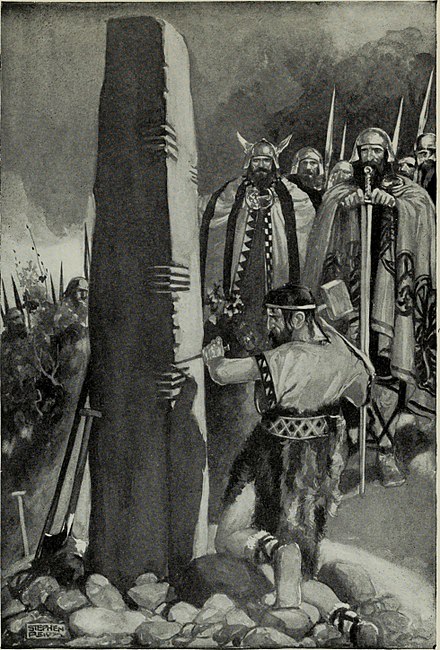
Ogam (Ogham–grooved writing) is said by scholars to be derived from an ancient Greek word, “ogme,” meaning “groove.” Note that Irish Ogham appears only in inscriptions believed to postdate the time of Jesus. The Ogham script found in Iberia (Spain) and in America has fewer consonants and omits the vowels and appears to date from around 800 B.C.E. and upwards. I.e., it is older in America than in Ireland. With all the studies by Barry Fell, et. al., it is easily seen that the Celts visited or settled in parts of the U.S. about the same time Celts started first moving into Ireland from Iberia, thus backing Fell’s studies that our history is as ancient as that of Ireland and Europe. 20 For a thousand years or more, ancient Hebrew-Phoenicians, Libyan, and Egyptian mariners had visited, and in some instances established, small colonies over here. This is evident by the hundreds of lapidary (stone) inscriptions found in several languages (i.e., Phoenician, Iberian-Punic, Libyan, and Egyptian hieroglyphs) antedating the Celtic Ogham inscriptions. Descendants of these visitors are found among some of the eastern and central Indian tribes, several of which employ dialects in part from ancient Phoenician (Esau and Dan) and North African nations. 21
By the way, the Celtic language still exists, Capt reminds us. “Today, four Celtic dialects are spoken in Britain: Welsh, Gaelic, Erse (or Irish), and Manx. Welsh is used in Wales for religious services and is the official language for all documents of the Welsh Nationalist Party.” 22
“Iberes” (Gaelic name for Hebrews) was carried by Celtic peoples from Spain to Ireland. Ireland was named “Hibernai,” which name still exists. But ancient historians apply the name “Scotia” to it more than any other. Orosius (3rd Century geographer) used the term, “Hibernia, the nation of the Scoti.” Ancient poets and historians claim the name “Scotia” was derived from “Scota,” queen-mother of the Milesians. Undoubtedly this was Scota, the daughter of Zedekiah, the last king of Judah. She married a Milesian prince in Egypt and their son, Eochaidh (Heremon or Eremon) married Tea Tephi and founded a dynasty in Ireland. 23
Of course this is the same Zedekiah of the Book of Mormon who we think may have a son named Mulek who escaped Egypt or was born in North America about 580 BC and was a leader of the Mulekites More about Scota here: Also Geological Evidence for the British Throne of David
Also see a facebook site about the Phoenician’s before Columbus here:
That the Sakka were a branch of the Gimiri (Israelites) is proved by (among others) a trilingual inscription found in the tomb of Darius in southwestern Persia. The inscription includes a list of the nations Darius ruled over. He listed three separate groups of “Sakkas,” the “Amyrgian Sakkas,” the “Sakkas with the pointed caps,” and the “Sakkas who are beyond the sea.” In each case, the name “Gimiri,” in the Babylonian text, is translated “Sakka” in the Persian.
Capt says these inscriptions have been known for years but the publications dealing with them have generally passed over the translation of “Gimiri” to “Sakka” with scarcely a comment, again showing the seemingly willing ignorance of many “scholars” of today.
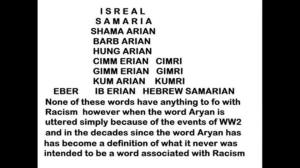 The only conclusion that can be drawn from these inscriptions (plus the writings of Josephus) is that the Iskuza were called “Sakka” by the Persians. This solidifies the fact that the “Iskuza” (Israelites), the “Sakka,” and the “Gimiri” are the same people. Reviewing the Royal Correspondence of the Assyrian Empire, it is evident that the “Iskuza,” the “Sakka,” the “Scythians,” the “Cimmerians,” and the “Gimiri” are all Israelites. 24
The only conclusion that can be drawn from these inscriptions (plus the writings of Josephus) is that the Iskuza were called “Sakka” by the Persians. This solidifies the fact that the “Iskuza” (Israelites), the “Sakka,” and the “Gimiri” are the same people. Reviewing the Royal Correspondence of the Assyrian Empire, it is evident that the “Iskuza,” the “Sakka,” the “Scythians,” the “Cimmerians,” and the “Gimiri” are all Israelites. 24
The Israelites were also called Sakka, Saka, and Iskuza by the Medes and Persians
Caesar, Strabo, and Diodorus describe Celts as fair-haired, blue-eyed, high spirited, boastful, quarrelsome, courageous, and a race who loved ornamentation. These descriptions, though, relate to the Celts of France, Britain, northern Italy, and the lands north of Greece. In Iberia, the invading Celts came in contact with, and intermingled with, an earlier Iberian people. Wilhelm von Humboldt believes these “original” Iberians to have been the ancestors of the modern Basques. Fell buys into this theory, believing the dark-haired strain of Irish and Scot Gaels, as well as the other dark-haired Celts, are the product of ancient intermarriage of Celts with Iberian Basque stock, the language of the Basques having all but suffered extinction in the process of integration.
It further appears likely to him that the bands of Iberian Celts who crossed the Atlantic must have included many brunettes of original Basque Iberian extraction, though speaking the Goidelic branch of Celtic. They probably were equally mixed, blonde and brunette Celts. Although no skull or skeleton remains have been found, other similarities exist. The copper and bronze artifacts (points and knives) of New England almost perfectly match those found on the Iberian Peninsula. The dolmens (Breton word meaning “stone table”) of New England exactly match those known from Europe and the Middle East. Dolmens are memorials to chiefs or important events and take the form of a huge central boulder, sometimes ten tons or more in weight, supported on three, four, or five vertical stones like pegs. The stone, slab-roofed chambers over here match those in Europe. Dissenters, of course, believe the bronze knives and daggers were brought over here by modern collectors, then lost. (Collectors who pay thousands, even millions, for art and other collectibles usually lose them?)
They believe the American stone chambers to be the work of “colonial farmers,” termed “root cellars.” The absurdity of this is seen when it is found that these chambers are astronomical observatories, with solstice and equinox alignments and other Druid or priestly functions, and, again, matching those in Europe. The outer surfaces of the door lintels (or other similar surfaces) contain Ogam dedications to one of the Celtic gods, usually Bel (Beltane), the names of which are written in Phoenician letters as well as in Ogam. The inner walls or ceilings commonly carry other inscribed material, including phallic carvings. The rock cairns are the same. The “May Day” phallic stones are the same. The Druids’ seats are the same. The stone “Druid circles” (called sun circles atop the Great Divide and other high places in Eastern and Western America) are the same.
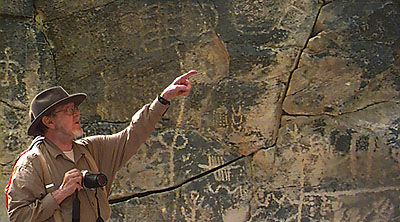
Gloria Farley and others have discovered many Ogam inscriptions in Oklahoma, the voyagers apparently ascending the Mississippi, Arkansas, and Cimarron Rivers, leaving these inscriptions and burial mounds. Celtic art on walls, dishes, pottery, and burial urns from Iberia and North America are virtually identical.
Space does not permit all the evidence. The men of Tarshish established colonies in eastern North America, the settlers apparently drawn from the native Iberians (Celts and Basques) of the Guadalquivir Valley in Andalusia (Barry Fell calls these people Celtiberians) and other areas.
Editor’s note: See the many connections of the Phoenician voyages with the landing of Lehi to North America. Our friend Richard Beale from England has taken two trips one from Tunisia to Florida in 2020 and one from Oman that could have landed in Florida in 2009. Both journey’s were in the same replica Phoenician ship of 600 BC. They have proved it is possible for Lehi to have landed in Florida and it is possible that Mulek came up the Mississippi river to land near Zarahemla which is near Nauvoo, Illinois.
Dan in America Continued, “That they could not have included many Phoenicians is apparent from the lack of sophisticated material cultural objects at the sites so far investigated. Rather, these colonists must have been accustomed to the rude manner of life of the Iberians before the arrival of Phoenician traders in Spain but, like many colonial peoples, they had acquired the language of their colonizers, in this case the Phoenicians, and some at least of their chieftains were literate in the Tartessian manner of writing the Phoenician (or Punic) tongue. These inferences are drawn from the documents found in their chieftains’ burial mounds. Man-made burial mounds, or tumuli, are characteristic of many royal graves of the European Bronze Age.
“The first find of an engraved Phoenician tablet in America was that of a Tartessian inscription found in 1838, excavated from a burial chamber found at the base of Mammoth Mound, in Moundsville, West Virginia.” 25
The Pontotoc stele, found in Oklahoma by Gloria Farley and Weldon W. Stout, is the work of an early Iberian colonist in America–script is known only from the Cachao-da-Rapa region in northern Portugal. The Iberian Punic letters are an abstract from “Hymn to the Aton,” by Pharaoh Akhnaton, and says, “When Baal-Ra rises in the east, the beasts are content, and (when he hides his face?) they are displeased.” Although dated from the thirteenth century B.C.E., the American version can scarcely be older than about 800 B.C.E. 26 Fell says these Celtiberians came from Ireland and Wales, and even from Palestine.
Was there a Phoenician-Danite and American-Celtic connection? Very probably. A city built by people in Spain was called Tarshish (same name in “Old Testament”). The Greeks called it Tartessos, from which comes “Tartessian,” used by epigraphers to describe the script and dialect employed by the men of Tarshish. It is a dialectal variant of Phoenician. The Hebrew Scriptures say the ships of Tarshish were the largest seagoing vessels known to the Semitic world, the name eventually being applied to any large ocean-going vessel. These ships became proverbial as an expression of sea power. With their monopoly on the making of bronze, they traded with Celtic peoples in Europe and Britain, and probably with people in America, which thing they kept strictly secret. Some, including James Whittall (colleague of Fell), think that the American Celts were deliberately brought here by Phoenicians, who wanted mining communities to exploit American natural resources, and with whom they could then trade. (More on this later)
Inscriptions, for example, have been found in West Virginia and Ohio, where their association with large burial tumuli resembling those of the Iberian Bronze Age point to important American colonies of these Phoenician navigators and merchant princes. Merchants rather than mere explorers, they traded with the New England Celts, who by 700 to 600 B.C.E., would be well-established fur trappers already and very likely were mining precious metals on many sites where ancient workings have been discovered. 27
“The periodic arrival of Phoenician ships on the New England coast is attested by the Ogam inscription on Monhegan Island, off the coast of Maine. It is obvious that the flat-topped rocky islet would not have been set aside for the loading and unloading of Phoenician ships were they not regular visitors to America, with a predictable timetable of ports of arrival and departure at expected dates.” 28
These Monhegan inscriptions are given in old Goedelic and were intended as a notification for native American Celts and Amerindians too, probably, who had goods for sale or exchange, to inform them where to bring their merchandise. They suggest that organized international maritime commerce was well established in the late Bronze Age, that North American ports were listed on the sailing timetables of the overseas vessels of the principal Phoenician shipping companies, and that the same information was circulated to customers in America.
Another point of interest is that nearly all the rivers in the Northeast U.S. are named with European Celtic names, not Amerindian names. Also, in the state of Washington, alongside the Columbia River, some college students found a skull that turned out to be 9,200 years old, and that of a white man. Now called “Kenniwick Man,” further studies presently are being done on it. Whether the dating methods used (two different ones were used, both with the same age-result) are completely accurate, the find lends further credence to a Celtic presence over here much earlier than once believed.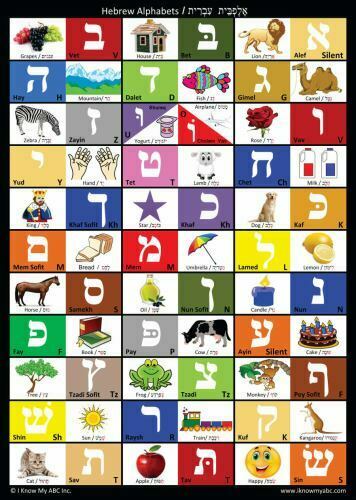
Commander Gene Andress, who is a Muskogee (Creek) Indian from Alabama, writes:
“Late in the summer of 1942, when I had just turned fourteen, I went to visit relatives near Gadsden. On a nearby farm lived a lad of my own age named Doug Davis. He began to tell me the local Indian traditions. There were still many Cherokees and Muscogees who lived in the area, as well as numerous village sites and Indian mounds along the nearby Coosa River. We talked about ‘lost treasure,’ and met an old Muskogee chief who told us about ancient legends of white men who had sailed up the Coosa a thousand years ago to trade for wood, furs, and metals.
“Being even at that age of a skeptical academic bent, I checked in the local library and found references to Welsh princes having sailed the Coosa around 500 C.E. Even this vague literary confirmation greatly sparked my interest. Chief Tappawingow further told us of a cave near an ancient trading village known as Tulla, not too far away, where relics could still be found. Typically adventuresome teen-agers, we set out to find this place, some five miles to the south, from his fairly precise directions…I can yet feel the thrill of the search after these 36 years.” 29
He goes on to say that they found the cave and arrowheads, broken pieces of pottery and a small vase. These artifacts proved to be Roman, similar to some found on board a wrecked vessel dating from Republican times, about 100 B.C.E., found in the Mediterranean and carrying a cargo of ceramic lamps from a factory in Pompeii in Campania, south of Naples 30
America in the fifth century C.E. had become a land of haven and refuge for Christians all over the western part of the Old World. From Morocco, Libya, Spain, and Britain, people took ship for Asqa-Samal (as the Libyans called America, “The Great North Land”). 31
A version of the Ten Commandments engraved on a rock at Los Lunas near Albuquerque, New Mexico, and a similar one on a stone tablet from a burial mound at Newark, Ohio, are ancient inscriptions using a north Canaanite script and old Hebrew language. 32
An Ancient Hebrew inscription, “God is the Sun, Sacred is the Sun,” is found in the Andes Mountains, the script being early Iberic, and words being Hebrew. It is possible the black circular sun-symbol is a mystic sign for “Yahweh,” in which case the inscription is to be regarded as Iberian Hebrew. 33
On p. 168 are discussed the Jews in Tennessee, Kentucky, and east Arkansas, which already have been commented on. A memorial stele in slightly illiterate North African Creed of the Byzantine period was found at Cripple Creek, Colorado, saying, “Herein is the last resting place of Palladis, the servant of God.” 34
Salvataore Michael Trento wrote an interesting thing in a chapter entitled, “Pennsylvania, New Jersey, Southern New York.” I quote:
“Colonel Joseph Brant was a Dartmouth-educated Mohawk sachem (chief) whose biography was written by William Stone in 1838. In the book Stone cites a lengthy and informative conversation between Brant and a questioning scholar: ‘Among other things relating to the western country,’ says Mr. Woodruff, ‘I was curious to learn in the course of my conversations with Captain Brant, what information he could give me respecting the tumuli (mounds) which are found on and near the margin rivers and lakes, from the St. Lawrence to the Mississippi. He stated, in reply, that the subject had been handed down time immemorial, that in an age long gone by, there came white men from a foreign country, and by consent of the Indians established trading houses and settlements where these tumuli are found. A friendly intercourse was continued for several years; many of the white men brought their wives, and had children born to them; and additions to their numbers were made yearly from their own country. These circumstances at length gave rise to jealousies among the Indians, and fears began to be entertained in regard to the increasing numbers, wealth, and ulterior views of the new comers; apprehending that, becoming strong, they might one day seize upon the country as their own. A secret council, composed of the chiefs of all the different nations from the St. Lawrence to the Mississippi, was therefore convoked; the result of which, after long deliberation, was a resolution that on a certain night designated for that purpose, all their white neighbors, men, women, and children, should be exterminated. The most profound secrecy was essential to the execution of such a purpose; and such was the fidelity with which the fatal determination was kept, that the conspiracy was successful, and the device carried completely into effect. Not a soul was left to tell the tale.'” 35
Jean Hunt, in her book, Tracking the Flood Survivors (1991), wrote about Prince Madoc. Madoc, Prince of Wales, is said to have established the first European colony in the continental U.S. A sailor who became head of the Welsh navy, he sailed during peaceful years to the Antilles, the Bahamas, Mexico, and possibly Venezuela and Florida. His last mission left Wales in 1170, which voyage was recorded in the ancient maritime log of missing ships of Britain in 1171. Olson believed Madoc, on one of his earlier voyages, to have been the white, bearded visitor to South America called Quetzalcoatl. He made the point that the Pope of that time had ruled that the first European explorer to visit a new land could claim ownership for his country. The French and Spanish, he believes, would have been very interested in suppressing evidence that a Welshman had been there earlier. He traced Madoc’s progress on his last voyage from the Gulf of Mexico inland, always meeting and being pushed further and further inland by hostile tribes. When the Spanish reached Mobile Bay, “they found evidence the Welsh had been there. They found Roman coins that had been minted in Wales, and some old coracles (the unique, round leather boats used in Wales) in a cave that was situated along the Dog River.”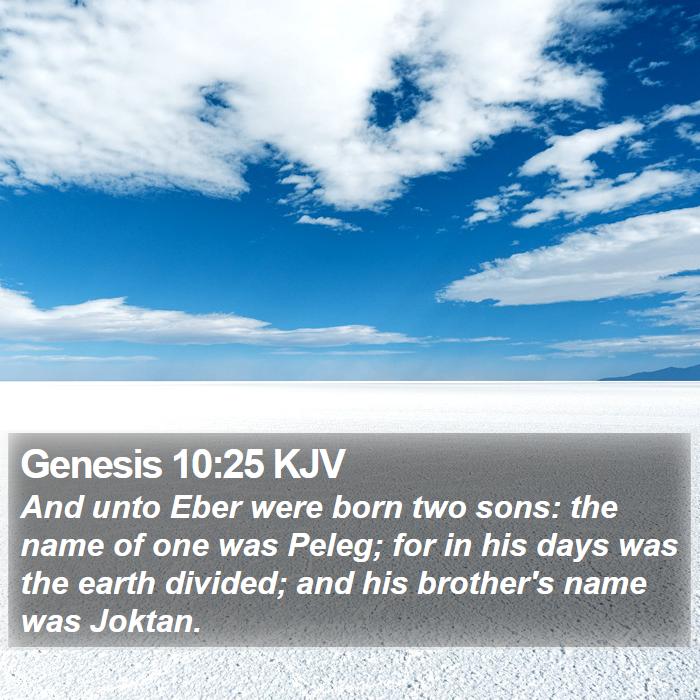
Eventually, Madoc and his colonists reached Clark County, Indiana, where Olson believed they became known as the Mandan Indians. General George Rogers Clark reportedly found some skeletons in armor that he thought were ancient Welshmen. Other Welsh armor, marked with the mermaid and harp that appeared on Madoc’s coat of arms, was found near the Falls of the Ohio. Native Americans in the area spoke of yellow-haired giants, whose kings were buried in stone cists, and of a war of extermination waged against the “White Indians.” The final battle took place at the Falls of Ohio, where “nearly the whole of the White Indians were driven upon an island and slaughtered.” (excerpted from Jean Hunt, quoting from Dana Olson’s book, Prince Madoc: Founder of Clark County, Indiana)
Jean Hunt further says, “George Catlin, the painter, visited the Mandans (Jean Hunt’s words–I have heard from another source that he lived with them for two years) and painted them with blond hair and grey or blue eyes. Reportedly, Welsh speaking people were able to talk with them with no difficulty. They used boats like the coracles of Wales (My note: called “bull boats”), which were propelled in the same manner: by standing in them and drawing the paddle toward the boat, rather than with oars extended to the sides, as was the case with Indian canoes.” 36
Another source (of mine) adds that many were red-headed and freckled-faced and were required by the tribe to speak Welsh until age 12, after which they could learn an Indian language. May the writer interject something of interest at this point? We know that the Phoenicians very probably were Esau-ites, with Dan mixed in, but some evidence exists that they might just as well have been Israelites too. In Greek eyes, the Phoenicians-proper were the same as the Israelite tribes inhabiting the Phoenician coast. Romans called them “Poenes” or “Puni.” The Puni (or Phuni, the descendants of Phua) were a clan in the Tribe of Issachar (Numbers 26: 23, 24), who at one time had conquered the “Phoenician” mother city of Sidon. The Phoenicians also were known as the “Puni,” and “Puni” is a clan name among the Tribe of Issachar. “Of the sons of Issachar after their families…of Pua, the family of the Puni…” (Num. 26:23)
The Hebrew name Pua (Phua or “Puni”) is a root word denoting a plant used to make red dye. The name “Phoenician” has the same connotation. Even “Phoenix,” from which the term “Phoenician” is derived, is a Greek word meaning “red” after the dye Phoenicians were famous for producing.
Note too that Sidon once had been conquered by the “Shakalesh” or “Saddara.” Both were one and the same and were Israelites from the Tribe of Issachar. Issachar, like Dan, was linked to his brother Zebulon. In Gen. 49:13, Zebulon is blessed: “Zebulon shall dwell at the haven of the sea (on the sea shores) and he shall be for an haven of ships; and his borderland shall be unto Sidon.” (See also Deut. 33:18,19)
Yair Davidy writes, “The Talmud (Megilla 6a) understood the blessing of Zebulon to entail success in sea fishing, the production of purple dye from a sea mollusc, and the manufacture of glass from certain sands in the Tyre and Sidon areas. Zebulon was also considered a sea merchant. All the activities of Zebulon are those otherwise associated with the Phoenicians.“ 37
To digress further, Esau had twelve sons (Didn’t everybody back then?). An instructor of mine in graduate school, Dr. Ozerdin, himself a Turk, said that the Mongols were one of the Turkish tribes. He said these Esau-ites (my term, not his) had migrated into the interior of Asia. Later some of them came back to become the Turkish tribes we are most familiar with, the Seljuks, Ottomans, etc. In a book, The Dene and Na-Dene Indian Migration 1233 A.D.: Escape from Genghis Khan to America, the author, Ethel G. Stewart, makes an excellent case for the Navajo and other Athabaskan or Dene-speaking peoples in North America and the peoples of Central Asia being related, or even the same. The Navajo hogan, for example, is almost identical to the Mongolian yrta; the Apache’s one-stringed violin is similar to a Chinese and also a Mongolian musical instrument; Asiatics and many Indian tribes found barbecued dog a delicacy; the Dene peoples had knowledge of the crocodile and its habits, of caravans, of the coastal trade of Asia, of iron knives in pre-European times, even of iron ore; linguistically, there are 14 isomorphs (a specific word in one language meaning the same and sounding like a similar word in another) between Navajo and Mongolian. (The above excerpted from the book review)
While in Turkey, I was astounded at the similarity of the Turkish and Navajo weaving and color patterns of their rugs. Also strange to me were the definite “reddish” color of Turks and the overall shortness of them. Because of the blessing of Esau by Isaac, I have wondered if the Esau-ites not only sailed westward as Phoenicians and went eastward into Mongolia and China, but also if many of them continued onward, across the Pacific and the Bering Strait, and became the “Indians” (red men) of the North American continent. Some people believe Tiras, a son of Japheth, to be the father of the Indian tribes because of the similarity of names of his sons with Indian tribes in the western hemisphere. But every one of these tribes is in South and Central America, not North America.
Even skull types and physical builds have a message for us. Amerindian skulls on the western side of America are rounded, like Siberians and other Asians; those on the eastern side are oval, like the European Celtic. A mixture of the two (probably much interbreeding) is found in the Rocky Mountain states.
“…American Indian tribes varied widely in physical appearances, languages, and lifestyles, and represented different kinds of amalgamations of earlier peoples….East Coast native Americans resembled European and Middle Eastern populations physically more than they did Far Eastern peoples, while the reverse was true on the West Coast. Canadian Takhelne were related to Gaelic or some other Old World language. Pottery abruptly appearing in the Northeast about 1000 B.C.E. was closer in type to then-contemporary North European pottery (Vignette I) than to other American types.” 38
Could there be the possibility that some of the “red” Indians of North America were Esau and the “white” Indians of Jacob? Some (myself included) have believed for years that ETERNAL gave America to Israel, the son of Isaac, for an inheritance. It is part of our “promised land.” Wasn’t Esau his son too? Perhaps some of the red Indians have a rightful claim to North America too. (Digression ended)
Most of the evidence, though, points to Phoenicians being Esau. Note that “Ousoos” founded Tyre and is given the qualities of Esau, the brother of Jacob, according to Sanchuniathon (an early Phoenician writer).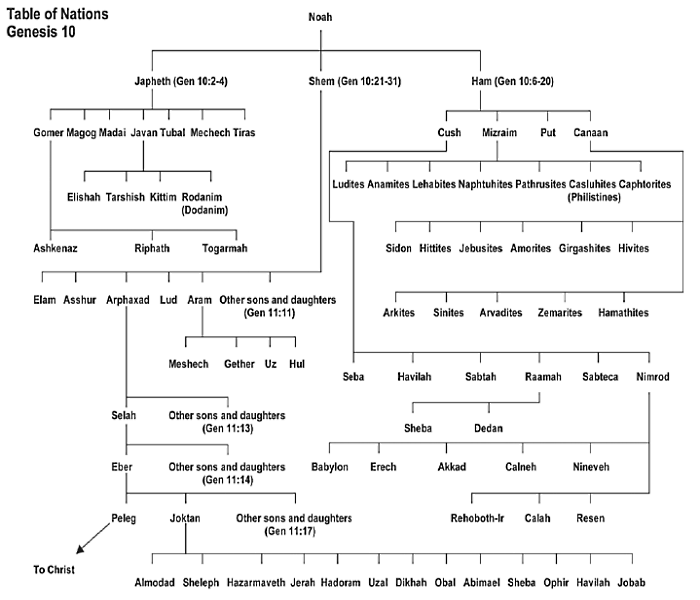
Going back to Jean Hunt, re. Israel and Phoenicia being related and the Canaanites being (probably) Esau (Phoenicia), she mentions a talk with one of her sources, Ivan Lissner. Lissner told her he believed (the Masons) were wrong, that the ancient wisdom of the Masons did not begin with the Egyptians or with King Solomon, but that it went far back beyond that, to the megalith builders. The deciphering of the clay tablets of Ras Shamra has opened doors of knowledge about the Canaanite mythology not previously known. They date from the fourteenth century B.C.E., but their content is much older, probably passed down verbally for awhile. Since the Canaanites and Israelites inhabited the same country, led a similar life, were familiar with the same legends, and worshiped the same god (at times), we are forced to assume that both had a common origin. Thus the Ugarit tablets take us back to the earliest history of the Israelite people, making their discovery one of the most important events in “Biblical” research. The religion of the Canaanites was not primitive, just “pagan.” A tightly organized priesthood served regular spells of duty in their numerous temples. Their supreme deity was El, a word which means “god” in the Phoenician and other Semitic languages. 39
The Phoenicians, remember, brought the alphabet to Greece, and it became the same alphabet for all Europe. Herodotus says in the fifth book of his histories that the Greeks got their written script from the Phoenicians, who came to Greece with King Cadmus, bringing with them many branches of knowledge. Israel also was a seafaring race, renowned for their hardiness, daring, and commercial enterprises. The Ostimians, the spiritual ancestors of the Frisians, Saxons, Vikings, Dutch, and English, used large leather-covered boats. These boats also were used by the pre-Celtic inhabitants of Ireland, and the aboriginal Irish were called Fir-bolg (“people of the hide-boats”) by the Celts (these boats being the same as those used by St. Brendan, the Welsh, and the Mandan and other plains Indians).
“Apparent trips to America have been recorded in Viking sagas such as Hauksbok and Eyrbyggia, by Greek historians Plutarch and Diodorus Siculus, in several Chinese documents, and in medieval European accounts of voyages by Irish St. Brendan, Welsh Prince Madoc, and Scot Henry Sinclair. Artifacts have been found in America that accord with each of these accounts. Barry Fell deciphered also an in situ engraving on a large cliff face at Figuig, Morocco, that told of ‘A Fifth-Century Moroccan Emigration to North America.'” 40
Tracing Dan – Part 2 Chapter 2 Tracing Dan – Introduction Index Page
Footnotes
- Fell, Barry,Saga America, Times Books, 1980, chapter entitled, “Refuge America,” p. 166.
2. Ibid.
3. Ibid. p. 167.
4. Nollau, Dr. Guenther; Utriusque, Dr. Iuris, “Ten Commandments in the New Mexico Desert,” ESOP, 1986, p. 142
5. Ibid., p. 143.
6. Ibid.
7. Fell, Saga, p. 6.
8. McClone, William R.; Leonare, Phillip M., “The Epigraphic Controversy,” ESOP, 1986, p. 125.
9. Fell, Saga, p. 50.
10. Kraus, Gerhard, “In Honor of Elliot Smith & William James Perry, Founders of Diffusionist Theory,” ESOP, 1986, p. 183.
11. Fell, Saga, p. 35.
12. Fell, Barry, America B.C., Pocket Books, 1976, p.
13. Carter, George F., “The Money Cowry and the Midewiwin Society,” ESOP, 1986, p. 160.
14. Fell, Barry, “Etymology of the Lower Mississippian Languages–Part 1: Introduction,” ESOP, 1990.
15. Fell, Saga, p. 85.
16. Ibid., p. 87.
17. Ibid., p. 88.
18. Ibid.
19. Fell, Saga, pp. 93-114.
20. Capt, E. Raymond, Missing Links Discovered in Assyrian Tablets, U.S.A., 1995, p. 152.
21. Ibid., p. 154.
22. Ibid.
23. Capt, Op.cit., p. 150.
24. Ibid., p. 140.
25. Fell, ABC (America B.C.), p. 157.
26. Ibid., p. 159.
27. Ibid., pp. 53-54.
28. Ibid., pp. 100-101.
29. Fell, Saga, p. 118.
30. Ibid., p. 120.
31. Ibid., p. 121.
32. Ibid., p. 167.
33. Ibid.
34. Ibid., p. 168.
35. Trento, Salvataore Michael, The Search for Lost America: The Mysteries of the Stone Ruins, p. 93.
36. Hunt, Jean, Tracking the Flood Survivors, 1991, p. 128.
37. Lost Israelite Identity, Russell-Davis, 1996, p. 161.
38. Totten, Norman, “Old World Contacts with America,” ESOP, 1986, p. 81.
39. Hunt, Tracking, p. 38.
40. Totten, Op.cit., p. 83.
http://www.originofnations.org/books,%20papers/dan/dan4.htm





